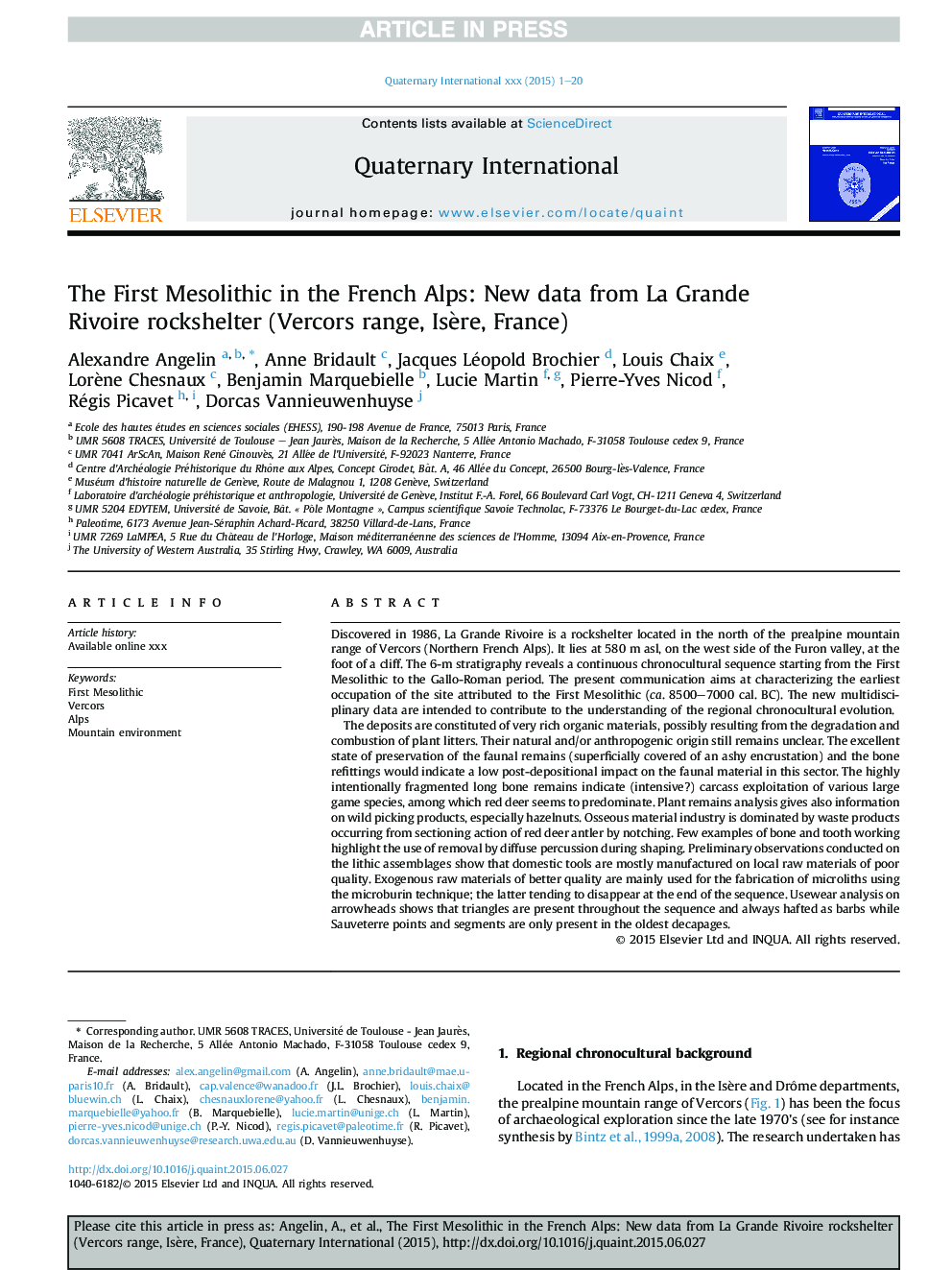| Article ID | Journal | Published Year | Pages | File Type |
|---|---|---|---|---|
| 5113892 | Quaternary International | 2016 | 20 Pages |
Abstract
The deposits are constituted of very rich organic materials, possibly resulting from the degradation and combustion of plant litters. Their natural and/or anthropogenic origin still remains unclear. The excellent state of preservation of the faunal remains (superficially covered of an ashy encrustation) and the bone refittings would indicate a low post-depositional impact on the faunal material in this sector. The highly intentionally fragmented long bone remains indicate (intensive?) carcass exploitation of various large game species, among which red deer seems to predominate. Plant remains analysis gives also information on wild picking products, especially hazelnuts. Osseous material industry is dominated by waste products occurring from sectioning action of red deer antler by notching. Few examples of bone and tooth working highlight the use of removal by diffuse percussion during shaping. Preliminary observations conducted on the lithic assemblages show that domestic tools are mostly manufactured on local raw materials of poor quality. Exogenous raw materials of better quality are mainly used for the fabrication of microliths using the microburin technique; the latter tending to disappear at the end of the sequence. Usewear analysis on arrowheads shows that triangles are present throughout the sequence and always hafted as barbs while Sauveterre points and segments are only present in the oldest decapages.
Keywords
Related Topics
Physical Sciences and Engineering
Earth and Planetary Sciences
Geology
Authors
Alexandre Angelin, Anne Bridault, Jacques Léopold Brochier, Louis Chaix, Lorène Chesnaux, Benjamin Marquebielle, Lucie Martin, Pierre-Yves Nicod, Régis Picavet, Dorcas Vannieuwenhuyse,
